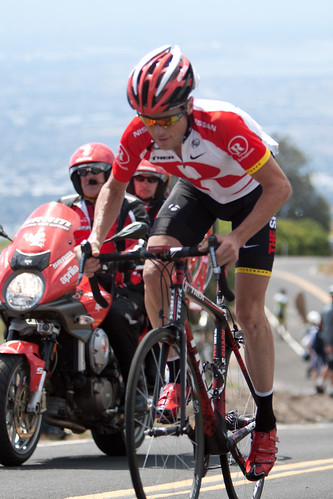View Zayante in a larger map
If my recent rides were in dry conditions, this was certainly a change. Thursday night it rained, and Friday dawned overcast and foggy. It wasn't raining anymore, but the roads were quite wet. The clouds had held the temperature in check, so it wasn't cold when I left the house at about 9.
I took my normal route through Los Gatos and around the Lexington Reservoir. Instead of taking Old Santa Cruz Highway all the way to Summit, however, I instead turned onto Mountain Charlie Road, which I've only previously descended. That's a pretty steep stretch of road, but it's short. Once I got to Summit I crossed Highway 17 and descended the west side of Mountain Charlie Road, down into Scotts Valley. Mountain Charlie Road is a much better road to climb than to descend, but having said that it wasn't as bad as I expected.
 |
| The covered bridge in Felton |
The trip up Zayante would have been uneventful, except that on a downhill immediately before the Zayante Market, I hit a bump. I heard an odd sound, but didn't notice until a few seconds later that my Garmin Forerunner 305 had bounced out of its plastic clip. I went back to retrieve it, and on this lonely, lightly traveled road I saw a car round the corner and snap the thing into pieces. What are the chances?
That's the second 305 I've lost. The first popped out while I was descending the Quicksilver trail. I'm sure that computer survived, but I couldn't find it. This one was toast.
Well, damn. As a fallback for recording ride information I turned on the MotionX application on my phone, which is pretty good but drains the battery too quickly to be used on long rides. Unfortunately MotionX can't display my heart rate, so my recent strategy for pacing myself was suddenly useless. I like to think I'm not overly dependent on gadgets or technology, but I immediately missed being able to see my heart rate and the altitude.
 |
| A hairpin on Upper Zayante Road |
I was thinking about heading north to take Black Road down, but the day was running out so I cut the ride short by taking Bear Creek Road down to the Lexington area. Bear Creek Road is a pretty fast descent, and I followed a car down to pace myself.
The rest of the ride was uneventful, but I felt good enough to take Kennedy back toward home.
Now, normally I look at the GPS track to learn a bit about the ride and produce an elevation profile, like the one below. I had data from the latter part of the ride courtesy of MotionX, but the first part was lost with the crushed 305. I was surprised to find that this worked: first, I drew a map on Google Maps, then downloaded it as a KMZ file. Then I ran that through the GPS Visualizer, which not only converted it to GPX (which was my only goal), but also was kind enough to add elevation data based on USGS and/or NASA data. Well, that's a bonus, and was enough to produce the profile below. I didn't have my timing or heart rate data, but I don't pay much attention to that retrospectively anyway.
 |
| Elevation profile... estimated. |




















